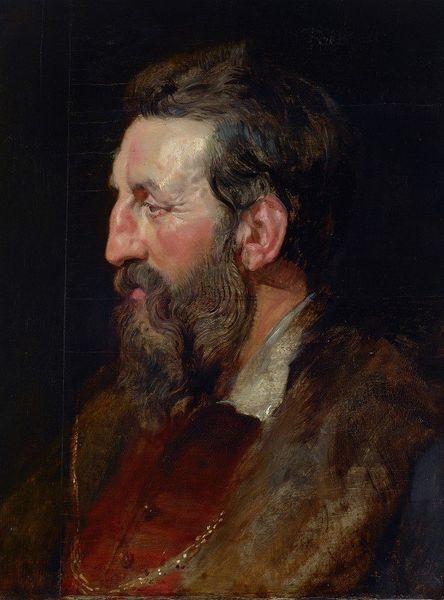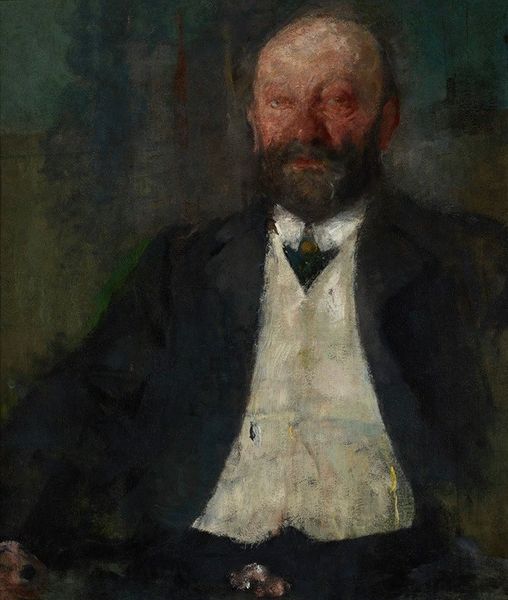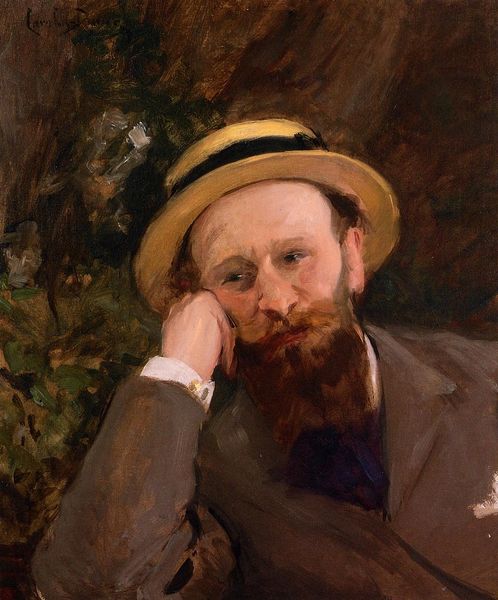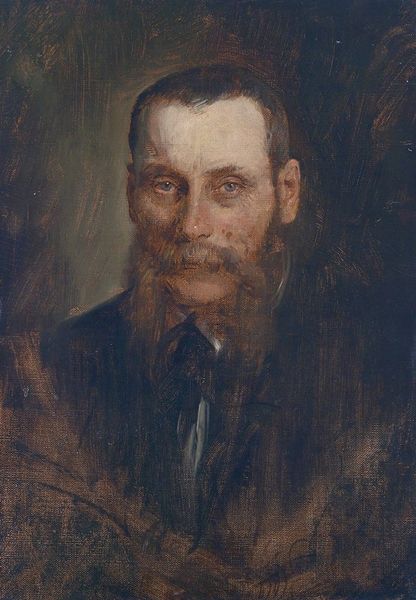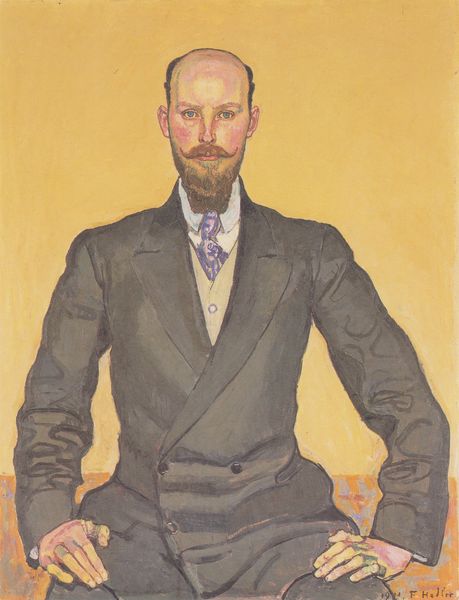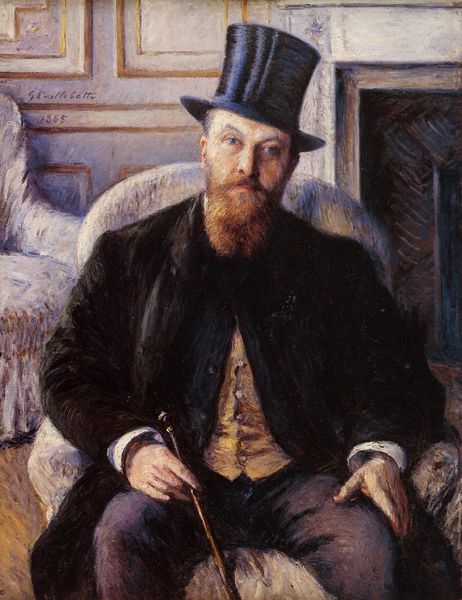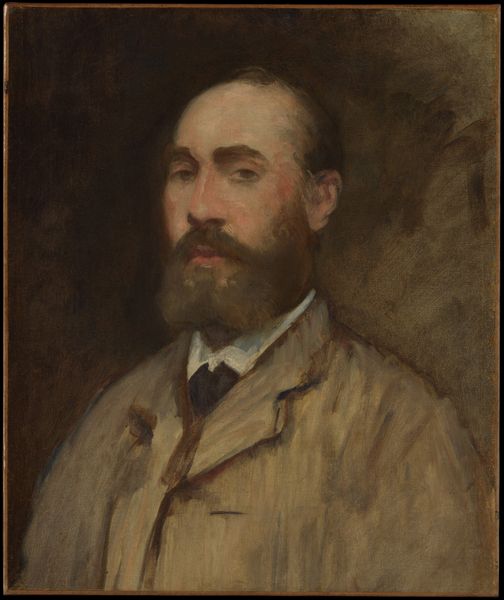
painting, oil-paint
#
portrait
#
painting
#
oil-paint
#
russian-avant-garde
#
history-painting
#
realism
Copyright: Public domain
Curator: Ilya Repin painted "Portrait of Sergei Witte, Minister of Finance" in 1903, employing oil paints. There's something incredibly arresting about its seemingly unfinished quality. What are your immediate impressions? Editor: It projects an almost melancholic grandeur, don't you think? The somber tones contrast with the brilliance of Witte’s white suit. The dark background is also quite ominous. Given the revolutionary climate in Russia at the time, I find myself asking what message the artist intended to convey. Curator: A stark study in contrasts indeed. I'm struck by how Repin has chosen to model the face, building the form out of carefully placed blocks of color, creating the Minister's imposing presence, that solid form practically emerges from the shadowy ground. Editor: Precisely. Witte was a figure of both admiration and animosity during that period; a powerful finance minister under two tsars at a moment of social upheaval, yet ultimately removed from influence because of his progressive policies and stance against royal power. This portrait hints at that complex identity. Was it a critical commentary or an attempt at honest, though sober, representation? Curator: The handling of the brushwork suggests both. It is far looser, and suggestive than most portraiture one might expect of such a figure. It lacks the polish to be found in many society portraits, which creates a remarkable tension between representation and an exploration of materiality through brushstrokes of paint. Editor: The suit especially feels like a field of white brushstrokes contained on the canvas. How might Witte have perceived it? What negotiations might there have been? Did this depiction add to the image he wanted to convey as a ‘progressive’ moderniser? Curator: An excellent question! What the painting really does, I feel, is underscore Repin's supreme grasp of form, his deft control of tonal modeling, the way in which he uses those visual devices to direct our attention to the play of light and shadow, to make us think, ultimately, about paint. Editor: Perhaps both are inseparable; our thoughts about paint and how we feel about Witte in that suit. For me, Repin's genius lies in provoking those inseparable interpretations, and revealing those moments that expose how power and portraiture intersect.
Comments
No comments
Be the first to comment and join the conversation on the ultimate creative platform.

